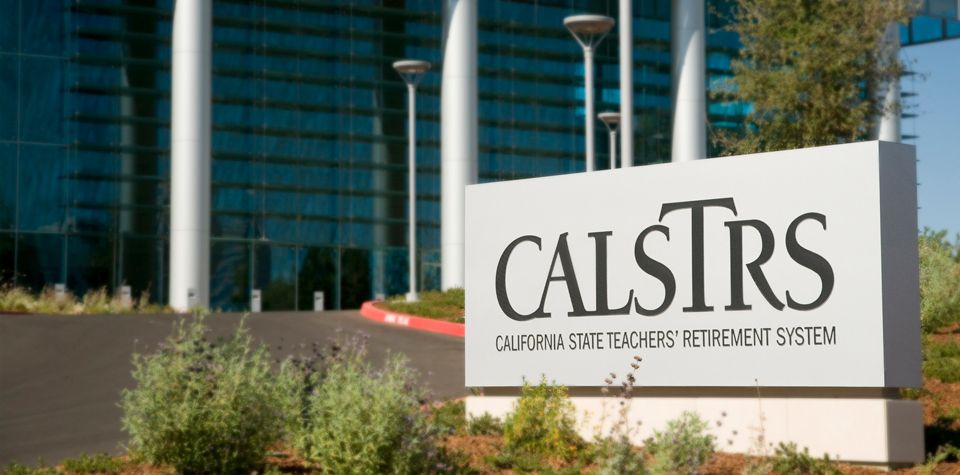Credit rating agencies concerned about California pensions costs
by Chris Reed | April 1, 2019 10:26 am

A new Public Policy Institute of California poll shows the number of state residents worried about the cost of government pensions is at a 14-year low[1]. In recent remarks to the Commonwealth Club in San Francisco, new state Superintendent of Public Instruction Tony Thurmond rejected[2] the idea that pension costs were generally a major problem for school districts around the state.
But a recent comprehensive review[3] by the Bond Buyer painted a starkly different picture. Based on interviews with officials in credit-rating agencies and the state’s Fiscal Crisis Management Action Team (FCMAT), as well as reviews of financial records from large school districts across the state, it forecast a wave of state takeovers of districts under the provisions of a 1991 state law that provides emergency loans to districts that can’t pay bills. But the loans come with the condition that district superintendents and school boards lose considerable autonomy over their budgets, which must have as a first priority repaying the loan to the state.
Nine districts have taken out such loans since 1991, and the Sacramento City Unified School District could become the 10th [4]this fall when it is expected to run out of dwindling cash reserves.
A Fitch Ratings analysts told the Bond Buyer that about 50 of the 124 school districts it tracks have such low reserves that if an economic slowdown froze or reduced state revenue, those districts could quickly lose their capacity to pay bills. The same problems seen by Fitch in the larger districts that it monitors are likely to be seen in the 1,000-plus smaller districts it doesn’t track.
Low birth rate hurts enrollment
Since California’s overall population keeps going up, that’s obscured a key complication in school finances: The fact that school enrollment in much of the state is in the middle of a broad, long-term decline[5] driven by changing demographics and birthrates that in 2017 hit an all-time low[6] for the Golden State. FCMAT CEO Michael Fine estimates that 65 percent of the state’s 1,200 districts have fewer students than they used to. Perhaps the most dramatic decline is in Inglewood Unified, where present enrollment is 8,000 – about 40 percent of what it was in 2004.
Because state funding is based on the Average Daily Attendance formula, the enrollment declines can hammer districts even in a decade in which state funding for education has increased by more than 70 percent. That’s because many school districts don’t reduce their staffs by an amount equal to the lost enrollment. A FCMAT report[7] on Oakland Unified issued last May called this a key factor in the financial strain faced by the district.
Another issue is that retirement benefits in some districts don’t just include pensions from the California State Teachers’ Retirement System. Some districts, including Los Angeles Unified[8] and Sacramento City, offer generous health insurance to retirees for as long as they live.
S&P rating service downgraded LAUSD’s bonds last month. Fitch downgraded some of Sacramento City’s bonds in February, and further downgrades seem certain.
CalSTRS needs booming market
Officials with CalSTRS remain optimistic that healthy investment returns can reduce CalSTRS’ present unfunded liabilities of about $100 billion. Boom markets on Wall Street have at times allowed CalSTRS to keep mandatory pension contributions relatively flat for years at a time.
But the 2007 recession hammered[9] CalSTRS, forcing the Legislature and Gov. Jerry Brown to pass a bailout measure in 2014 that will roughly double annual contributions from districts, the state and teachers by July 2020, when its final increase is phased in.
But hopes that profitable investments will be a big help in reducing liabilities aren’t coming to pass. The Sacramento Bee reported recently[10] that CalSTRS only had a 1.62 percent return on its portfolio for the first eight months of fiscal 2018-19 and was not expected to meet its target of a 7 percent annual return.
- a 14-year low: https://www.sanluisobispo.com/news/state/california/article228534849.html
- rejected: https://www.commonwealthclub.org/events/archive/podcast/california-education-chief-tony-thurmond
- review: https://www.bondbuyer.com/news/big-california-school-district-woes-may-be-tip-of-iceberg
- the 10th : https://calwatchdog.com/2019/03/22/sacramento-teacher-strike-threat-spurs-criticism/
- decline: https://edsource.org/2019/californias-k-12-enrollment-drops-again-charter-schools-see-increase/610573
- all-time low: https://www.sacbee.com/news/state/california/article211330979.html
- report: http://fcmat.org/wp-content/uploads/sites/4/2018/06/Alameda-COE-Oakland-USD-final-mgmt-letter-1229.pdf
- Los Angeles Unified: https://achieve.lausd.net/cms/lib/CA01000043/Centricity/domain/133/benefits%20administration/active/2018%20Retiree%20Benefits%20Guide.pdf
- hammered: https://calpensions.com/2012/02/07/calstrs-funding-gap-widens-so-does-solution/
- recently: https://www.sacbee.com/news/politics-government/the-state-worker/article228534849.html
Source URL: https://calwatchdog.com/2019/04/01/credit-rating-agencies-concerned-about-california-pensions-costs/